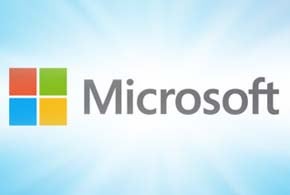By Ericka Chickowski
With PC sales at an all-time low, customer surveys indicating dissatisfaction with Windows 8, and Microsoft announcing impending reorganizations and backpedaling on the design traits of the new OS, there’s a perfect storm brewing for partners around system refresh rates, analysts say. According to industry watchers, partners shouldn’t hold their breath for Redmond to pump up sales in 2013.
“If this were a football game, it would be a classic case of fumbling the ball,” said Laura Didio, principal analyst for Information Technology Intelligence Consulting (ITIC), an IT analyst and consulting firm, of the Windows 8 rollout. “Microsoft really messed up with the interface and with Windows RT not having backward compatibility with most of the major applications.”
In the last few weeks, a number of industry surveys have shown that the new operating system has missed its mark with both business and consumer users. In late May, the American Consumer Satisfaction Index released its recent user satisfaction benchmark statistics based on a survey of 70,000 customers. The ACSI numbers show that Microsoft’s user satisfaction following the release of Windows 8 has slid down to nearly the level it was at in the Vista years.
Just a week prior to that, Forrester released results from a survey of nearly 1,300 decision makers at North American and European businesses that showed just 29 percent believed Windows 8 would be a good operating system for their firms. In its report including survey results, Forrester predicts enterprises and even small businesses will wait to deploy Windows 8—and some will skip it altogether.
This tracks with survey results from another study conducted by ITIC in May 2013 and October 2012. Of more than 1,100 IT decision makers surveyed, just 9 percent plan to migrate to Windows 8. Forty-nine percent said they have no plans to migrate, and 42 percent remain undecided.
Among the reasons stalling out deployment plans, the one most cited was that there was no business case and that Windows 7 was meeting their needs. That was followed by concerns about application compatibility and the newly redesigned Windows Metro GUI.
For its part, Microsoft is backing off of some of the elements that have raised users’ hackles about the new user interface, notably announcing that its upcoming release of Windows 8.1 later this month will reintroduce the operating system’s start menu. Also, word leaked out that Microsoft CEO Steve Ballmer is prepping the company for a major reorganization to get it better focused on becoming a “devices and services company.”
It could be a case of too little too late, said ITIC’s Didio, who noted that her firm’s survey found that Microsoft is battling a perception problem more than an execution issue. Of the 43 percent of businesses that tried Windows 8 and installed its “Classic” shell to bypass the touch-screen GUI, 96 percent gave it good feedback for performance, ease of use and feature enhancements. “But you don’t get a second chance to make a good first impression,” she added.
This could spell bad news for the channel, which had anxiously waited for Microsoft to provide a silver bullet for already-long PC refresh cycles and the migration of reliance on the mobile form factor.
According to IDC, in the first three months of 2013, the PC market experienced a 14 percent drop, the biggest decline in the market since the firm started tracking PC sales in 1994. The firm also reported that PC sales will be eclipsed by tablet sales as soon as 2015. Clearly, there are more forces at play in business-refresh decisions than simply the satisfaction ratings of Windows 8, Didio said.
“For a lot of these folks in the channel who are selling the Dells and Toshibas and HPs of the world, it’s not Microsoft’s fault if they don’t move,” Didio said. “They were looking a bit unfairly for Microsoft to be their savior, but it’s just a changing time.”
Ericka Chickowski, a Channel Insider contributing writer, specializes in technology and the channel.

